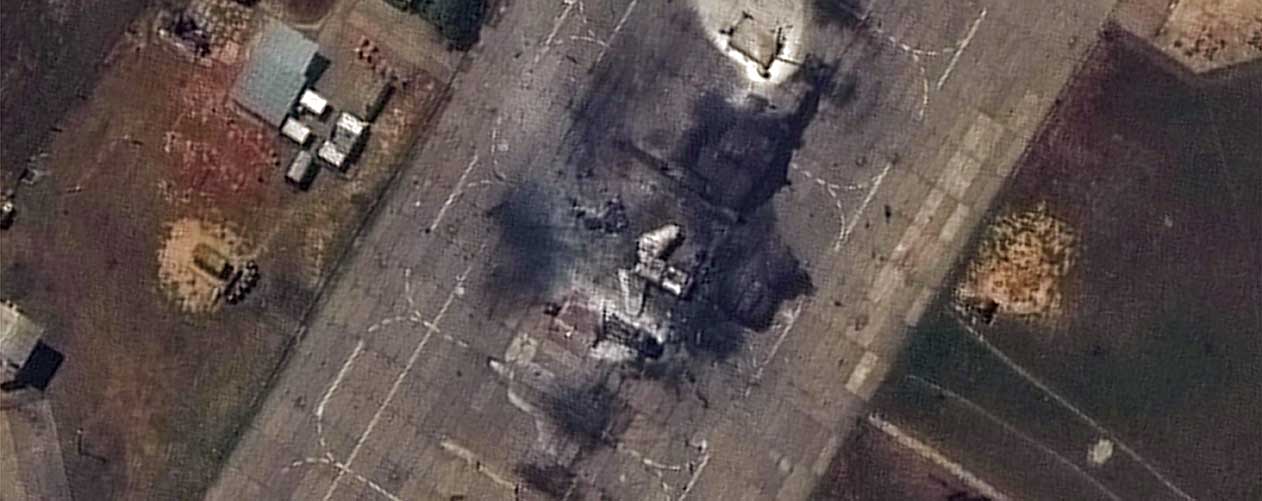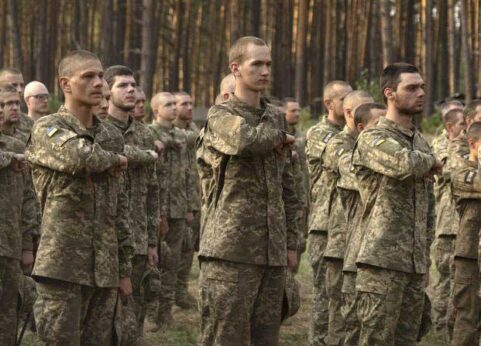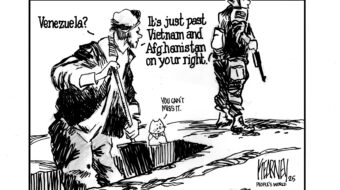
Ukraine is demanding that the U.S., after approving $60 billion in additional military aid to the country, should tell it where it should attack inside Russia to reach more troops and destroy more of their opponent’s intelligence-gathering ability.
The latest demands come after U.S. Joint Chiefs of Staff General Charles Brown, Jr., said last week that NATO troops, including Americans, would eventually end up in Ukraine.
Under the radar last week, a delegation of Ukrainian parliament members met with a bipartisan group of lawmakers in Washington to demand that the United States allow Ukraine to use U.S. weapons for attacks inside of Russia.
U.S. officials, according to the New York Times and other news outlets, say that they are “beginning to review” the Ukrainian demands.
Reviewing the requests contradicts the alleged long-held Biden administration position that U.S. weapons cannot be used to strike across the border inside Russia. In reality, Ukraine has long had access to such U.S. “help” in fighting the Russians.
In addition to all the weapons and other military aid, the U.S. regularly ascertains the location of Russian troops and equipment inside Russia for Ukraine and has given Kiev access to satellite imagery with that information.
Ukraine says, however, that it wants more than that, particularly in the area of immediate and direct help to step up attacks inside Russia.
Gen. Brown has confirmed the demands from Ukraine but would not say how the U.S. will respond. “At the moment, we don’t help them with all that stuff they do inside Russia,” he said.
Certain European allies of the U.S., particularly the U.K., as they often do when Ukraine demands more from the U.S., are saying that the U.S. should meet Ukraine’s request.
In the past, such support for Ukrainian demands for more aid from the U.S., when backed by certain allies, has been followed by a U.S. agreement to meet the demands. Rather than being prodded, however, many believe that having European allies speak up first provides cover for the Biden administration to pursue the course of action it already intended.
David Cameron, the British foreign secretary, said in Kiev this month that Ukraine had “the right” to use weapons provided to it to strike targets inside Russia.
Cameron, who backed several successful attempts to sabotage peace talks between Ukraine and Russia, said further, “Just as Russia is striking inside Ukraine, you can quite understand why Ukraine feels the need to make sure they are defending themselves.”
The response to Cameron by the Russians was a predictable threat of escalation of the conflict. Russia said if the British took the route advocated by Cameron, Russia would be justified in striking British military facilities and equipment in Ukraine “and beyond.” The Russians also summoned the U.K. ambassador in Moscow where they delivered a protest to him.
The U.S. did not criticize the British statements and said it was “up to Ukraine” to decide whether to strike inside Russia.
While the threat of escalation was raised by Ukraine and NATO, Ukrainian President Volodymyr Zelensky has just signed into law a bill calling for sending convicts and prisoners to fight on the front in exchange for parole.
The move signifies the determination of Zelensky to increase the number of troops involved in the fighting and it comes despite Ukraine’s long criticism of Russia for conscripting convicts.
The law took effect on Saturday and requires Ukrainian men aged 18 to 60 to carry their military registration documents with them at all times. The aim is to make avoiding forced military service much more difficult.
The new measure follows earlier ones with the same goal, including fivefold increases in the fines for draft-dodging to a maximum of 204,000 hryvnia (just over $5,000 USD)—almost equal to the annual average wage.

Zelensky said in December Ukraine needs to recruit an extra 500,000 troops to maintain its war effort against Russian offensives.
Russia has twice increased the size of its army since 2022, reaching over 1.3 million active personnel by the end of last year. It has also relied on heavy fines for draft dodgers, increased the upper age limits for conscription, and prisoner recruitment to expand the ranks.
Zelensky’s government needs the extra forces in places like the Kharkiv region, where Ukrainian commanders say they are outnumbered by the Russians seven to one on the front line.
The impact is felt on the home front, too. Ukrainian company bosses have complained that they are having trouble replacing the large number of workers who get called up by the military.
In the army, officers say morale is affected by the inability to release soldiers who have served years on the front line, which is dramatically impacting soldiers’ families, as well. A clause in the law saying conscripts would be sent home after 36 months was scrapped under pressure from top military commanders.
The lack of coverage by corporate media of the mass opposition to the war among Ukrainians is exposed by the facts.
A huge number of people, some 650,000 Ukrainian men, have either fled the country or refused to return home to avoid fighting. By comparison, during the war in Vietnam, the number of Americans fleeing the country has recently been estimated to be 100,000.
The number opposed to the war in the U.S. was far higher than the number who fled, of course, and anti-war people in Ukraine say the same is true in their country.
Ukrainian border patrols reportedly shoot at young men and boys as they try to cross borders out of Ukraine.
Some are swimming across rivers in order to get out of the country. On Friday, the Ukrainian Ministry of Internal Affairs said its soldiers had picked up the corpse of yet another man who drowned trying to swim the Tisza River demarcating the border with Hungary and Romania. The ministry said this was the 30th such fatality in the area.










